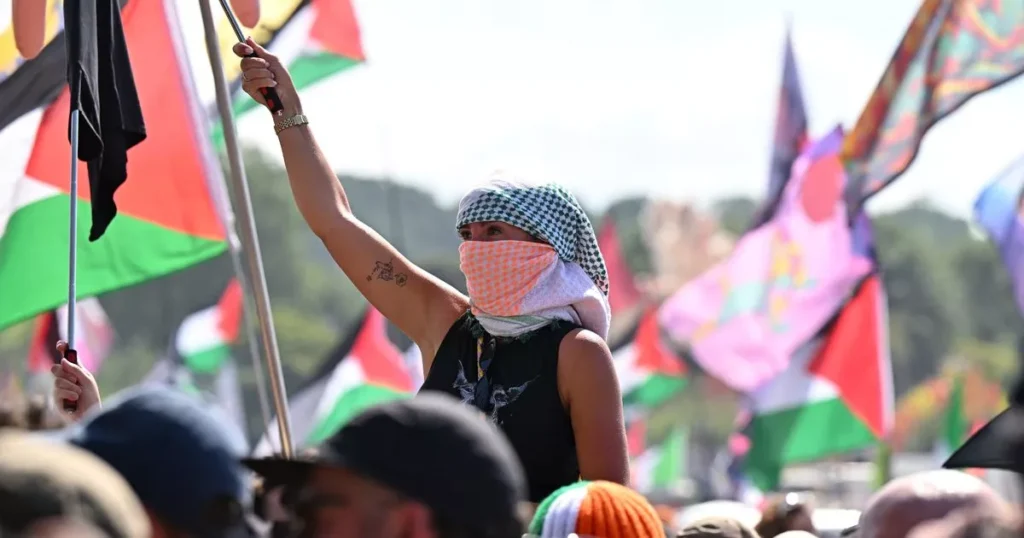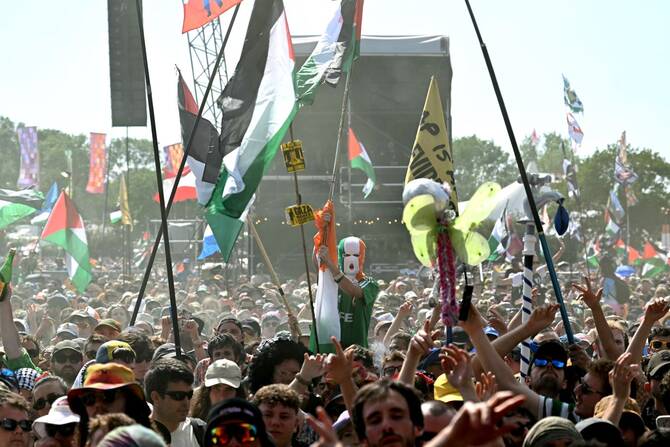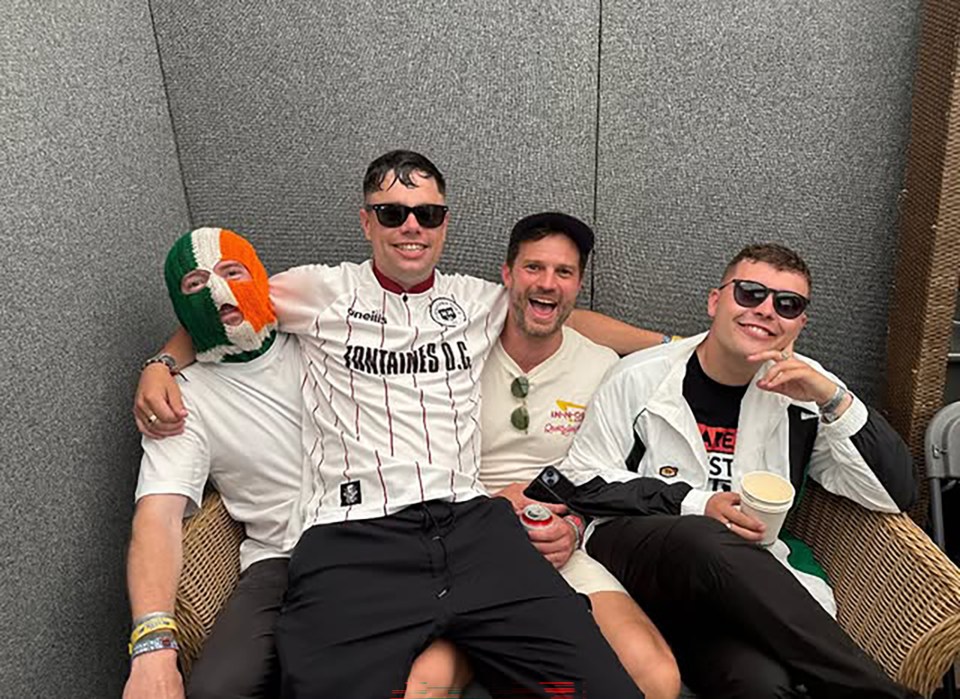Glastonbury 2025 saw Irish artists, led by Kneecap, turn the festival into a bold showcase of political defiance and cultural pride.
As Glastonbury 2025 draws to a close and revellers gradually trickle away from Worthy Farm, the festival’s story is still unfolding, one defined by politics, free speech, and a palpable sense of activism that took centre stage in what might be one of the most significant editions in recent memory. At the heart of that narrative were the Irish, who dominated headlines, conversations, and stages with a cultural and political presence that felt impossible to ignore.

Before the festival even began, the spotlight was on Belfast’s Kneecap. Questions swirled: would they be cancelled? Would they still perform amid a storm of controversy? The trio became a symbol of resistance, drawing both condemnation and support from unexpected corners. Political figures like Keir Starmer and influential music industry leaders attempted to push them out, signing a letter to exclude them, while an even longer list of artists: including Massive Attack, Fontaines D.C., Paul Weller, and Annie Mac, publicly backed the band. When they finally took the stage, it looked like history had been made. The West Holts stage was lifting through the strasophere, draped in black, white, green, and red alongside a sea of Irish tri-colours, as the band performed as Gaeilge. Kneecap’s message was about Gaza, about colonial complicity, and the unfolding genocide in Palestine. They set the tone for the weekend where political discourse was as loud as the music.
Kneecap’s impact was emblematic of a wider Irish presence at Glastonbury this year. It wasn’t just about one band or one story, it was a cultural moment. Irish flags flew proudly across multiple stages, a testament to a nation riding a wave of confidence following a decade of success across music, film, politics, and sport. This felt like a celebration of Irish identity on a global stage, where pride was expressed loudly and unashamedly.

According to reports, 33 Irish acts played over the weekend, a figure likely conservative given the festival’s size and scope. CMAT, one of Ireland’s brightest new stars, took a watershed slot on the Pyramid Stage Friday afternoon. Known for her no-holds-barred energy, she commanded the crowd, even leading chants of “Free Palestine,” unafraid to make her stance clear. Gurriers delivered frenetic performances on both The Park Stage and the Woodsies, openly voicing their political beliefs from stage: “Free Palestine, unlike other bands, we know where we stand.” Dublin’s Inhaler offered a poignant moment on The Other Stage, expressing solidarity with Palestine, while For Those I Love made his Glastonbury debut on the Lonely Hearts Club stage , a more intimate setting that he has always favoured, before joining Overmono for a late-night West Holts session.
Irish pop stalwarts like The Script, The Coronas, The Riptide Movement, and Lorraine Nash also made their mark, receiving warm applause and affirming Ireland’s ongoing relevance in mainstream culture. But perhaps most awe-inspiring cohort of performers was Ireland’s electronic music scene. From Max Cooper’s headline Arcadia set to KETTAMA’s packed Glade Stage performance alongside Interplanetary Criminal, fresh off the success of their hit “Yosemite”, Irish DJs and producers were in full force. Tommy Holohan’s peak-time Glade Dome set, EMA’s ICON stage appearance with heavyweights like Shy FX and Blawan, and Sligo’s Spray’s two sets, including a B2B with Eliza Rose, highlighted the strength and diversity of Irish electronic music at the festival. Belfast’s own Sally C and Swoose delivered a memorable B2B on the San Remo stage, while Annie Mac’s Irish meet-up became a major talking point, gathering a sea of green on Sunday to celebrate Irish culture and music.

Beyond the music, the Irish presence was felt in unexpected places. Actors Paul Mescal and Jamie Dornan were spotted engaging with fans and artists, adding to the sense that this year, Ireland’s cultural footprint at Glastonbury extended far beyond the stages.
In many ways, Glastonbury 2025 felt like a culmination, a moment where Ireland’s recent string of cultural and political achievements coalesced into a vibrant, unapologetic display of identity and solidarity. As tri-colours waved proudly and voices rang out in Gaeilge and English. On a stage where history, culture, and activism intersected, and where Ireland was very much front and centre.

